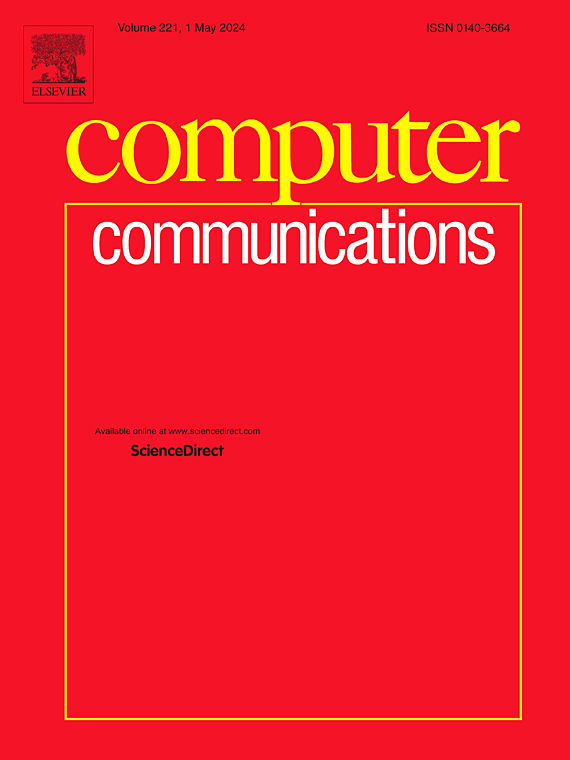央行数字货币普遍支付渠道网络分析
IF 4.3
3区 计算机科学
Q1 COMPUTER SCIENCE, INFORMATION SYSTEMS
引用次数: 0
摘要
区块链技术的最新进展提供了有趣的机会,值得对其在中央银行数字货币(CBDC)中的潜在用途进行系统调查。单独的区块链存在已知的可伸缩性问题,可以通过诸如第二层支付通道网络(PCN)来克服。然而,并非这种PCN的所有方面都易于指定和优化。因此,考虑到大量分散和单独配置的节点,要完全理解它的整体行为是具有挑战性的。在本文中,我们考虑了一个两层假设的CBDC,其中批发层使用许可的区块链,确保高完整性和可验证性,而零售层利用账本外PCN模型(具有大规模分布的普及节点),支持即时,隐私保护和零售支付。本文系统地分析了SF-PCNs和SH-PCNs两类PCNs的性能,这两类PCNs分别具有无标度拓扑和半分层拓扑特征。通过广泛的模拟和分析,我们通过探索市场运营商锁定的流动性、支付成功率、吞吐量、支付完成时间以及底层bbb的负载之间的权衡,为优化cbdc的PCN结构提供了见解。虽然sh - pcn和sf - pcn都可以提供最先进的容错和完整性保证,但我们证明sh - pcn更适合处理大量支付,随着网络节点数量的增加而更好地扩展,更符合当前货币和金融体系的解剖结构,因此应该优先考虑CBDC设计。本文章由计算机程序翻译,如有差异,请以英文原文为准。
An analysis of pervasive payment channel networks for Central Bank Digital Currencies
The recent advancement of blockchain technology presents interesting opportunities that are worth a systematic investigation for their potential use in a Central Bank Digital Currency (CBDC). A blockchain alone has known scalability issues that can be overcome by, e.g., a layer-2 payment channel network (PCN). However, not all aspects of such a PCN are easy to specify and optimize. Therefore, its overall behavior, given the multitude of decentralized and individually configured nodes, is challenging to fully comprehend. In this paper, we consider a two-layer hypothetical CBDC in which the wholesale layer utilizes a permissioned blockchain, which ensures high integrity and verifiability, while the retail layer leverages an off-ledger PCN model (with pervasive nodes distributed on a large-scale) that supports instant, privacy-preserving, and retail payments. We systematically analyze the performances of two families of PCNs, namely SF-PCNs and SH-PCNs, characterized respectively by a Scale-Free topology and a Semi-Hierarchical topology. Through extensive simulations and analyses, we offer insights into optimizing PCN structures for CBDCs by exploring the trade-offs among liquidity locked by market operators, payment success rate, throughput, payment completion time, as well as load on the underlying blockchain. Although both SH-PCNs and SF-PCNs can offer state-of-the-art guarantees of fault-tolerance and integrity, we demonstrate that SH-PCNs are better suited for handling large volumes of payments, scale better with the number of network nodes, are more aligned with the anatomy of the current monetary and financial system, and therefore should be preferred in CBDC designs.
求助全文
通过发布文献求助,成功后即可免费获取论文全文。
去求助
来源期刊

Computer Communications
工程技术-电信学
CiteScore
14.10
自引率
5.00%
发文量
397
审稿时长
66 days
期刊介绍:
Computer and Communications networks are key infrastructures of the information society with high socio-economic value as they contribute to the correct operations of many critical services (from healthcare to finance and transportation). Internet is the core of today''s computer-communication infrastructures. This has transformed the Internet, from a robust network for data transfer between computers, to a global, content-rich, communication and information system where contents are increasingly generated by the users, and distributed according to human social relations. Next-generation network technologies, architectures and protocols are therefore required to overcome the limitations of the legacy Internet and add new capabilities and services. The future Internet should be ubiquitous, secure, resilient, and closer to human communication paradigms.
Computer Communications is a peer-reviewed international journal that publishes high-quality scientific articles (both theory and practice) and survey papers covering all aspects of future computer communication networks (on all layers, except the physical layer), with a special attention to the evolution of the Internet architecture, protocols, services, and applications.
 求助内容:
求助内容: 应助结果提醒方式:
应助结果提醒方式:


